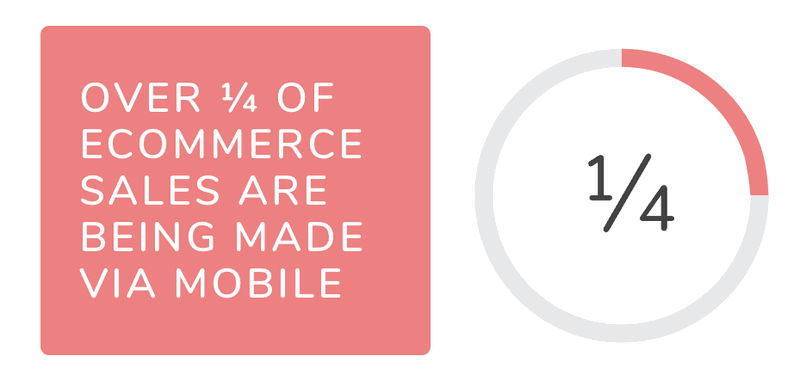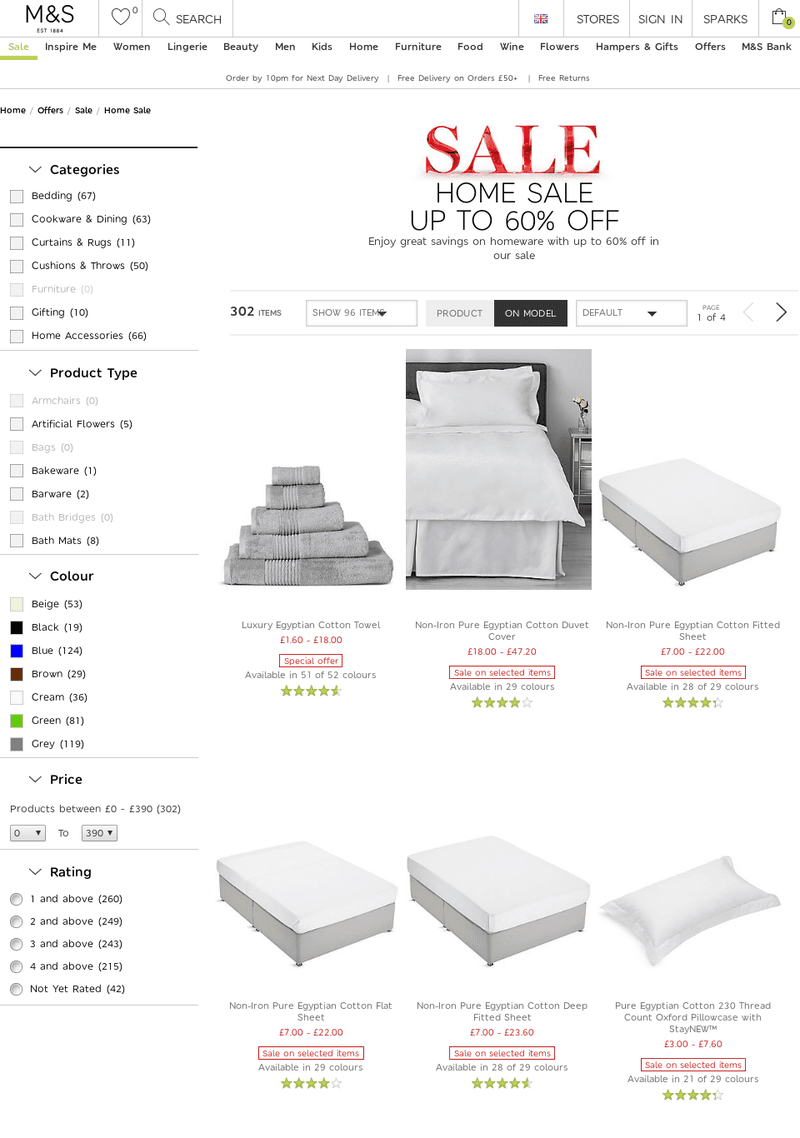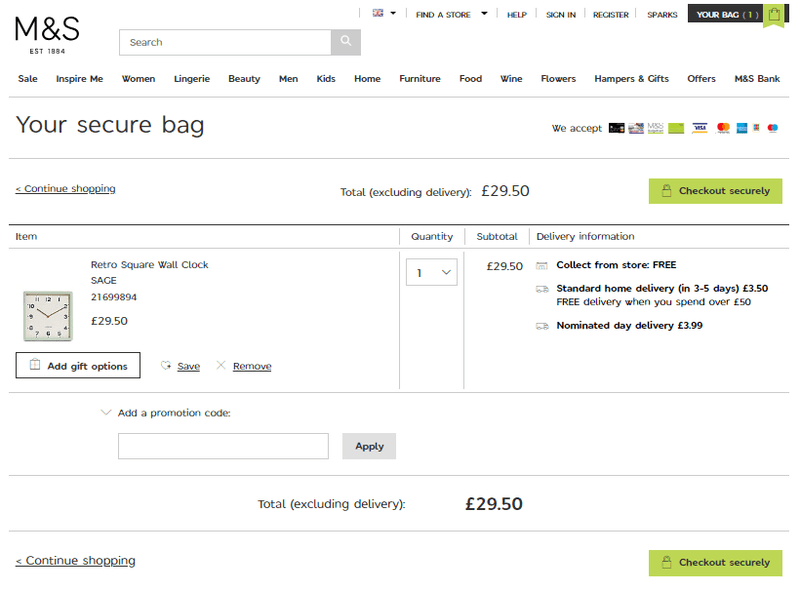How much does it cost to create an eCommerce website?
The question is a bit tricky and more than relevant. The reason is clear: online store websites have become quite popular these days, which means people are increasingly wondering about the price of their development. In the end, such platforms can both be the only source of your income and increase the profitability of your “offline” business. Not a bad prospect, right? That’s why so many forward-looking entrepreneurs are doing their best to figure out how to make an e-commerce website at no extra cost.
Interested in joining these farsighted market leaders? No problem at all! To help you with this, we've conducted a special study and are now ready to share its results with you. Just keep reading!
In our article, we're going to explain to you the proper way to build a successful e-commerce business from scratch. If you carefully follow our instructions, you’ll be able to provide your customers with the most positive online purchasing experience.
What you need to consider before starting an e-commerce website
Primarily, you should develop your own e-commerce business plan, it’s the first thing to think about. Agree, without a plan, it’ll be difficult to find out where to start, what to consider, what you can economize on... Therefore, we strongly recommend you spend your time reflecting on the strategy for future earnings.
What are the key e-commerce website development steps?
#1. Goals of eCommerce web development
Before you figure out how to build an eCommerce website, determine your goals. The more precise the task is, the faster and cheaper the process of eCommerce web development will be.
We mean, you, as the business owner, must clearly understand what exactly you want to achieve, what you expect from your resource, how it should look, etc.
Just answer the following questions:
-
What kind of online store websites are you expecting to have?
-
Do you plan to sell your products (services) only via the Internet? Or, perhaps, you already have a real store, maybe, you just want to increase earnings through digital sales?
-
What are your shipping options?
-
How large your project is going to be? Will it be possible to further scale it?
-
What is your e-commerce web development budget? Are you ready to start with a full-fledged resource or will you first create an MVP model?
Of course, one can come up with more questions regarding eCommerce web development. But these are enough to start.
And keep in mind, you’ll be able to carry out your project at a high level only if you know what you want to get as a result. Otherwise, developers won't understand what you expect from them, and you'll find yourself ultimately disappointed.
So, first of all, clarify your goals, and only then - create the online store. It’s the only way to succeed.
#2. The domain name and Website hosting
A domain name and website hosting are 2 important points often overlooked, and it’s an obvious omission. Let's not make the same mistake and take a closer look at these factors.
-
a domain name must be consistent with the name of your company, memorable, and easily pronounced. It's really significant because we’re talking about your business brand, which should represent one of the successful eCommerce stores. And it is also important to make sure the name is free. Believe us, the task is much more complicated than it might seem at first glance, and it is somewhat like trying to register a new email account on a popular service when you keep getting the same sympathetic phrase that the name already exists. If you’ve encountered such a problem in the past, you’ll understand the importance of dealing with the issue in advance. We suggest you use the help of one of the specialized resources, such as godaddy.com and whois.net
-
hosting must ensure the proper performance of your eCommerce website. There are different options, such as:
-
Shared hosting, the most simple one. The provider you've opted for allocates the necessary resources, and you pay a certain amount of money every month. The user of such a shared system has the opportunity to download files via FTP, as well as through the special panel.
-
VPS/VDS - Virtual Private/Dedicated Server is a hosting technology with several isolated virtual machines on a single physical server. You as its user gets the right to control all the process at the root-user level. This is a very good option for e-commerce website development.
-
dedicated server. The client gets the physical machine, which has certain characteristics and locates in a specially-equipped data center. Typically, big portals with a large number of visitors choose the dedicated server.
-
#3. SSL certificate
How to make an e-commerce website reliable and trustworthy? Since you’re dealing with payments, you should take care of the matter in question beforehand.
We recommend you seek help from an SSL providing secure data transmission through authentication and encryption technologies.
The SSL (Secure Sockets Layer) protocol is the guarantee of the absence of the slightest danger and threats of hacker attacks during the interaction of your server with the visitor's browser. SSL is the same thing as security. The SSL protocol helps to transmit the coded data through HTTPS. To return information to the decoded format, one should take advantage of a secret digital key.
The whole operation needs the installation of the SSL certificate - a unique virtual document, which characterizes the level of security of online store websites.
Types of SSL certificates (depending on the validation needed):
-
Domain validation: quite a simple option, which requires only domain verification and, therefore, is in high demand nowadays;
-
Business validation. The option is relevant for those businessmen who think about their reputation. In this case, more thorough research must be performed, including an analysis of your business processes;
-
Extended validation. Only these EV certificates provide the website with a green address bar in the browser.
To obtain a certificate, you must contact the organizations issuing them. However, if you ask us to develop an online shopping website, we ourselves would take care of this and other similar problems. We understand that your task is to join the number of successful eCommerce stores able to provide the best user experience, which is possible only if your customers are sure of their personal data security.
#4. A payment gateway
The eCommerce website development cost is not the only significant factor. It’s more important that your resource be profitable. So, you need to think of the payment system, namely - a payment gateway and credit card processor. For example, try using the help of sites such as Authorize.net and 2checkout.com.
Organizing a secure payment system is never easy, you have to spend a lot of time getting approval to use this technology, but there is no way to avoid such a laborious process. It's the only chance to find out how to build a successful eCommerce website (after all, your buyers will have to somehow pay for their purchases, right?).
#5. Marketing and promotion strategy
Of course, you need to take care of your resource promotion. Simply put, you should have a great eCommerce marketing strategy.
There are many ways to popularize your resource and attract new customers, including SEO optimization, affiliate programs, banner and context advertising, Google Shopping Campaign, and much more.
In addition, we advise you to pay attention to such resources as HARO, which guarantees the best media coverage, and PitchBox aimed at helping brands and companies make their web content popular.
Also, don’t lose sight of the social networks and the opportunities they provide. It’s not enough to integrate with Facebook, Instagram, and other similar resources. It’s important to create a specialized page of your company on all key social networks, which would represent your brand, demonstrate the product catalog, and advertise the eCommerce website.
In other words, in the e-commerce website development process you'll have to integrate additional marketing tools, and you had better think of it now, while the work hasn’t started yet. But we’ll mention the issue again a bit later.
How to make an e-commerce website successful
The main question of our article is voiced in its title, namely: how much does it cost to develop an eCommerce website? However, there is no point in considering the development budget if the resource is likely to be a failure. So first of all, you need to figure out how to make your online shop successful. And we suggest paying attention to the following issues.
#1. To register or not to register?
If you don’t want to lose half of your buyers, give them the possibility to make a purchase without having to register on your website: allow your user to order goods or services in an easier way (say, by specifying a phone number and/or email address). The process of creating an account takes time and effort, and impatient consumers do not always want to waste their energy. They’ll leave your resource in favor of a competitive one, which doesn’t cause so much trouble.
If you’d like to persuade shoppers to sign up anyway, indicate all advantages of the registration: a personal account with purchase history, a bonus system, discounts in honor of a birthday, and so on.
#2. Responsive design
If you want to know how to build the best eCommerce website, you need to think of its responsive design first. It means your resource will be correctly displayed on any device including smartphones, desktop computers, and tablets.
In the end, many people prefer to make purchases using mobile shopping solutions, so be sure your site is ready to meet the consumers’ choice.

#3. Clear interface
Thinking to create an online store, you need to remember that its design should be not only responsive but also appealing, capable of attracting the client's attention. But this is not enough either! It is significant that you would take care of creating a clear interface: the less time spent searching for the desired information, the better.
Your website must be as ergonomic as possible. In addition, it won't be superfluous to provide a system of filters and sorting to make the product selection process more user-friendly.
#4. Ever-present site search
A clear interface is only half the battle. You also need to create the search service for your eCommerce website.

As you can see, even the statistics convince you of the importance of this item on our list. So don’t neglect the search feature.
And of course, the search engine has to be made at the highest level, namely:
-
the search bar should be located on every page of the online store websites and be recognizable;
-
provide the ability to find a product for a given category (say, only among handicrafts);
-
don’t forget about the system of searching filters: the user will be glad to be able to specify the range of prices, the color of the product, and other parameters.
Develop an online shopping website with an advanced search engine, and you’ll know what the eCommerce website boom is. Surely, such a boom will positively affect your finances.
#5. Live Chat
Effective e-commerce website solutions ensuring a positive purchasing experience imply that the user has the opportunity to clarify some details of his order. However, not all people are fond of calling or e-mailing, many of them prefer a much more modern way of communication, namely, a live chat.
On the Internet, there are a lot of tools, which help to create a live chat feature. Among them Chatlio (technology that synchronizes with the Slack messenger), LiveAgent, LiveChat, and other instant messaging systems.
Each solution has its drawbacks and advantages, but the topic is too complicated to discuss in our article (maybe later, in another blog post). To make a choice in favor of a certain chat system, you must request assistance from developers who know how to build an eCommerce website with all its features and attributes.
How much does it cost to create an eCommerce website?
As you know, eCommerce web development requires a certain budget, but what kind of? Let’s take care of the issue and answer the question: how much does it cost to make an online store?
First of all, remember that we’re talking about starting an eCommerce website from scratch. In other words, we create the online store adjusted to your specific requirements. Such a solution is the most flexible and scalable. Moreover, it best suits your individual needs.
Technologies needed to build a successful e-commerce business from scratch:
-
Front-end: JS, HTML, CSS
-
Backend: Ruby on Rails, Spree Commerce, AWS (it’s the Amazon's server)
Features of successful eCommerce stores
To determine the costs to build a successful eCommerce business project, you need to figure out what it consists of. So we'll list the most important features of your website and evaluate each of them in the hours required to implement it. And only then, based on the data obtained, we'll make the final eCommerce website cost estimate.
Authentication (sign-in page)
It is important to make a user registration page so that a person can create an account and fill it with personal information. One of the additional business tips: don’t make the authorization a prerequisite, otherwise, you risk losing some of your customers.
Timeline: 24 hours
Catalog page
It’s quite an obvious and simple step - at first glance. However, if you are interested in how to make your online shop successful, you have to pay the most attention to this problem. We mean the catalog of goods must be as easy to use as possible:
-
break the catalog by product category to simplify the search for the desired position;
-
create a system of filters and sorting;
-
offer the opportunity to compare several similar catalog goods;
-
don’t forget about the catalog search (as you remember, we mentioned the importance of an advanced search engine to develop online shopping websites in high demand).
Filters, the search bar, and all other elements of the catalog should be very user-friendly. It’ll increase your chances to have high conversions in the future.
Timeline: 52 hours

Product details page
Discussing what is included in the e-commerce website making cost, we should recall such a feature as a product details page, which is nothing more than a product card. It must contain all the necessary information about a particular product: the photo, description, characteristics, dimensions, etc. A video demonstrating the goods in volume won’t be superfluous either. And we recommend adding an opportunity to leave feedback. Users would be happy to read reviews of those people who have already bought the product they're interested in.
Timeline: 50 hours
Shopping cart page
E-commerce web development necessarily includes the stage of creating a shopping cart. It's quite simple: as soon as the user clicks on the "Add to Cart" button, the product automatically appears on this page.
Timeline: 36 hours
Checkout page
Discussing the SSL protocol, we explained how to make an e-commerce website secure. And now we’re talking about the safety issue again. Because it is for safety reasons that special attention should be given to the checkout page. Payment is always a delicate moment, and the user must trust you.
To make the checkout page credible, you must take care of:
-
Minimum of clicks. The rule of three clicks says that the site should be designed in such a way that the user only needed 3 clicks to get the desired result. It applies to the checkout page too. 3 clicks may not be enough, but try to reduce them to a minimum level. The most effective e-commerce website solutions always follow this rule.
-
Transparency of the process. The buying and checkout processes must be as user-friendly as possible.
-
The possibility to continue shopping. Give the buyer the opportunity to continue shopping from any page, including the one we're discussing.
-
Links to your Private Policy. The page must necessarily contain a link to your Private Policy page to help the user familiarize himself with security measures.
-
Full information about the purchased product. The total cost of the order is insufficient information. It is desirable that the checkout page includes a more detailed description - the user would like to know exactly what he is paying for. Specifying shipping options would come in handy either.
Timeline: 40 hours

About us
Don’t be silent, tell users about your company. Prove that you can be trusted! In other words, create your business brand.
Traditional resources usually tell the whole history of the company (a story of its formation with all the ups and downs), but in fact, it’s not necessary. Nobody really cares why you decided to start eCommerce web development, your customers are more willing to learn about other things, namely:
-
number of years on the market;
-
achievements, awards, and certificates. What can your company be proud of?
-
the nature of the goods offered;
-
your suppliers. Or, perhaps, you produce goods and services yourself?
-
quality checking. Tell us what measures you take in order to make sure of the high quality of the products.
Of course, the About Us page can be replenished and edited, because, with the growth of your company, there will be new reasons to be proud of your resource.
Timeline: 12 hours
Customer Care (FAQ)
Starting an e-commerce website, you don't always realize that the project close-out won't lead to the completion of all works... because they are almost endless! Among other things, you should be ready to constantly support your customers.
Yes, your users are likely to have many questions about your eCommerce website, and these questions are usually quite typical. Be smart enough to answer them in advance and post in the FAQ section.
Questions can relate to delivery, payment, the return of rejected goods, quality certificates, and other important issues.
Timeline: 12 hours
Contact Us page
It is unreasonable to create an online store without the Contact Us page. The user must know all the options to contact you if necessary.
You have to specify the maximum number of your contact information: the address, a phone number, skype, email, a location map, etc.
And it would be smart to offer the opportunity to communicate with you through the special contact form.
Timeline: 8 hours
Integration with third-party solutions
Earlier, we explained to you the importance of considering any marketing campaigns ahead of time. If you’ve taken our advice into account, then in the eCommerce web development process you'll need to integrate the chosen marketing tools: Google Analytics, Google Tag Manager, Mailchimp, and so on.
Timeline: 12 hours
CMS
CMS is the administrative panel, the "control center" of your resource. It's the area where the owner can manage his site: the goods, orders and any other data. Undoubtedly, the CMS is a key stage of e-commerce web development.
Timeline: 56 hours
Final eCommerce website cost estimate
Well, it's time to take stock and finally answer the burning question: how much does it cost to create an eCommerce website? But before answering it, we’d like to mention one more important thing. Remember that in addition to designers and developers, you'll need the following specialists (and you, of course, will have to pay them):
-
Project manager to coordinate work processes;
-
QA engineers to test the eCommerce platform;
Timeline PM: 16 hours
Timeline QA: 30 hours
Depending on the complexity of the design and the number of web pages, the total cost can range from $ 10,000 to 18,000.
At conclusion
Starting an eCommerce website from scratch is, of course, more expensive than using ready-made solutions of popular platforms. However, the option we're discussing guarantees your eCommerce business brand several distinct advantages:
-
Unique site design;
-
Unlimited project scaling;
-
The chance to embody the boldest of your ideas regarding e-commerce website development.
Of course, only an experienced developer can help you with this matter. By the by, our team employs very talented and skilled experts willing to assist in the development process.
Our specialists are highly qualified and know how to build the best eCommerce website; moreover, they’re able to successfully apply their knowledge in practice.


